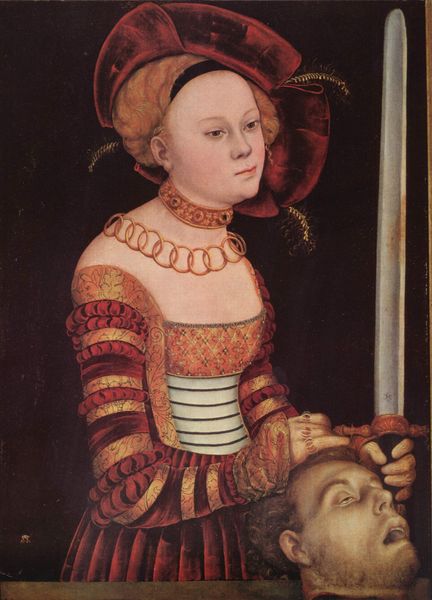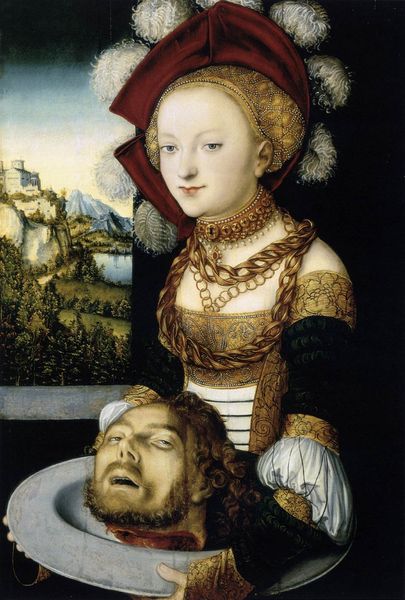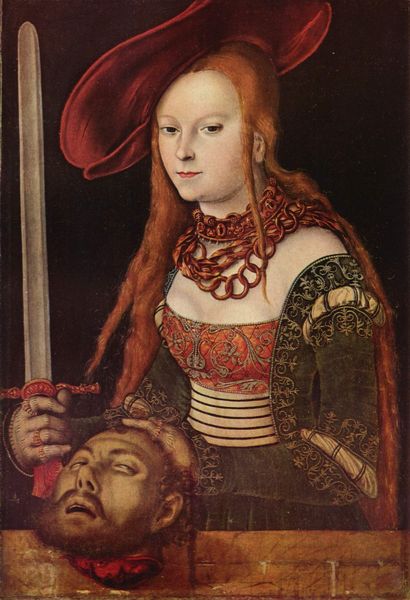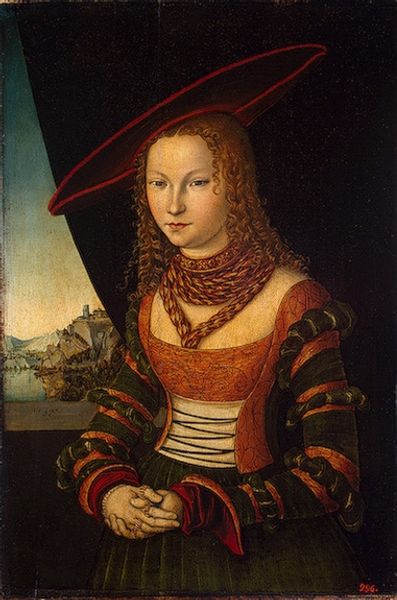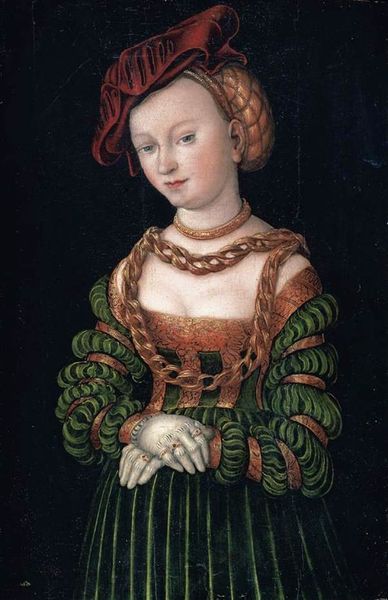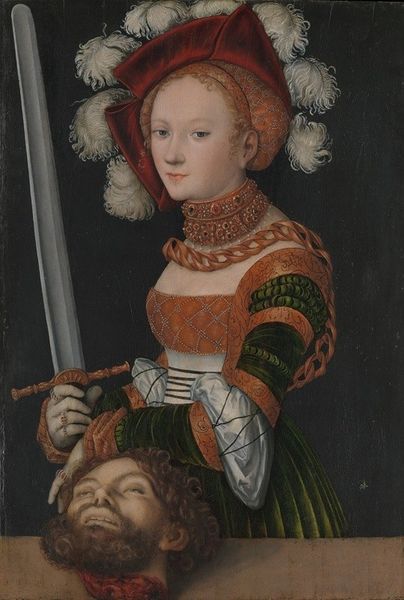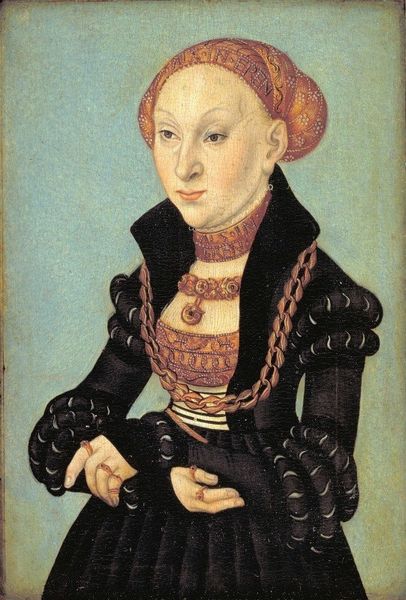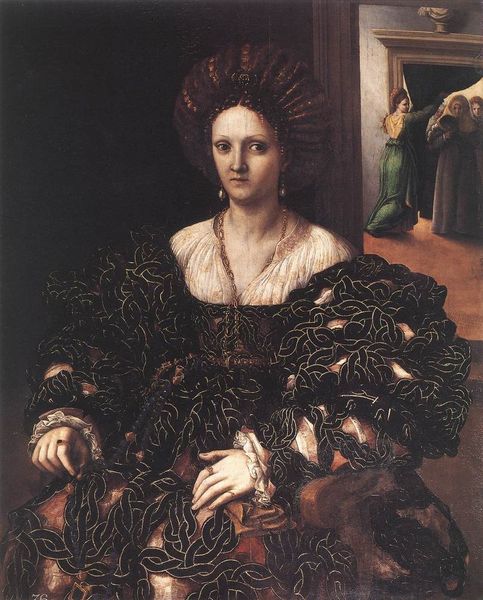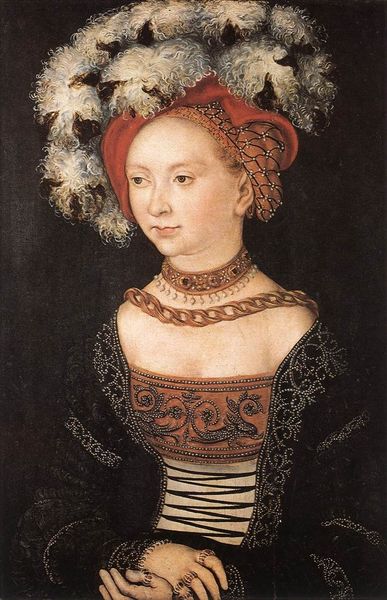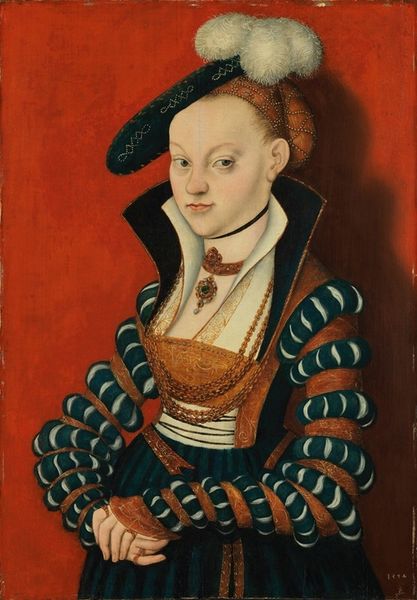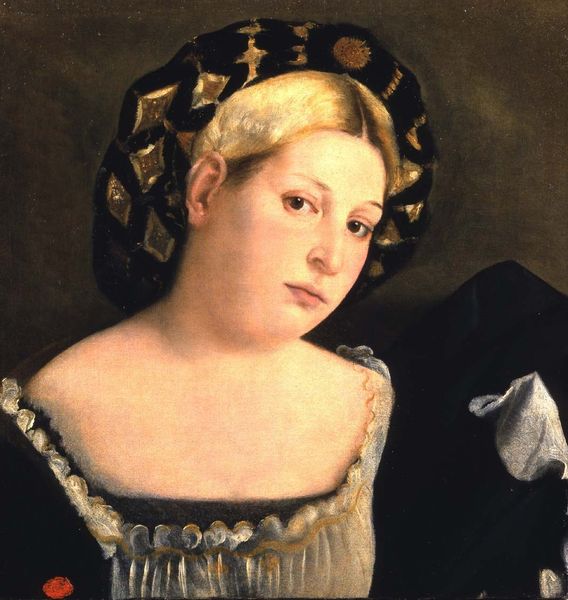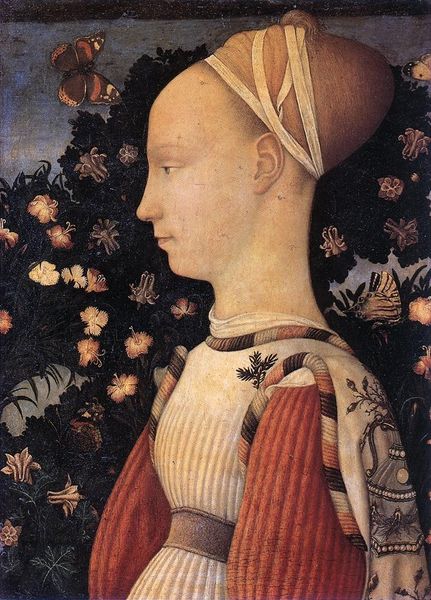
painting, oil-paint
#
allegory
#
portrait
#
painting
#
oil-paint
#
figuration
#
11_renaissance
#
christianity
#
history-painting
#
northern-renaissance
#
nude
Dimensions: 75 x 56 cm
Copyright: Public domain
Editor: Here we have Lucas Cranach the Elder's "Judith Victorious" from 1530, done in oil paint. I am struck by the juxtaposition of Judith's elegant attire with the gruesome head of Holofernes. It is… unsettling. What are your thoughts? Curator: The power of this image lies precisely in that unsettling feeling you describe. Cranach, positioned within the Northern Renaissance, utilizes this biblical scene to negotiate complex sociopolitical currents. Consider the Reformation, gaining momentum at this time. How might an image of a woman taking decisive action against tyranny resonate with a populace grappling with religious and political authority? Editor: That's a great point. The painting isn't just about a biblical story, but about the contemporary struggles of the people viewing it. But why depict her so opulently? The fine clothing almost seems to contradict the violent act. Curator: Ah, but does it? Think about the role of court painters during this era, particularly Cranach’s own relationship with the Electors of Saxony. The painting serves multiple purposes: It is a biblical scene, certainly, but it also displays a certain degree of wealth, and reinforces established social hierarchies through the controlled depiction of a powerful woman. Note the detail in her dress and jewelry. It elevates the status of Judith, yes, but also implicitly reinforces ideas about beauty and the spectacle of power. Do you think the setting or context may change how we feel about "justice?" Editor: It does. I see now how the painting acts as a site for exploring power relations, both within the biblical narrative and within 16th-century society itself. I originally missed all of that, thank you! Curator: And I am left considering the role that artwork, even historical artwork, continues to play in cultural debates and interpretations. There's still so much to unpack here, like her subtle gaze, which I think is part of a bigger question regarding women in the Northern Renaissance!
Comments
No comments
Be the first to comment and join the conversation on the ultimate creative platform.
